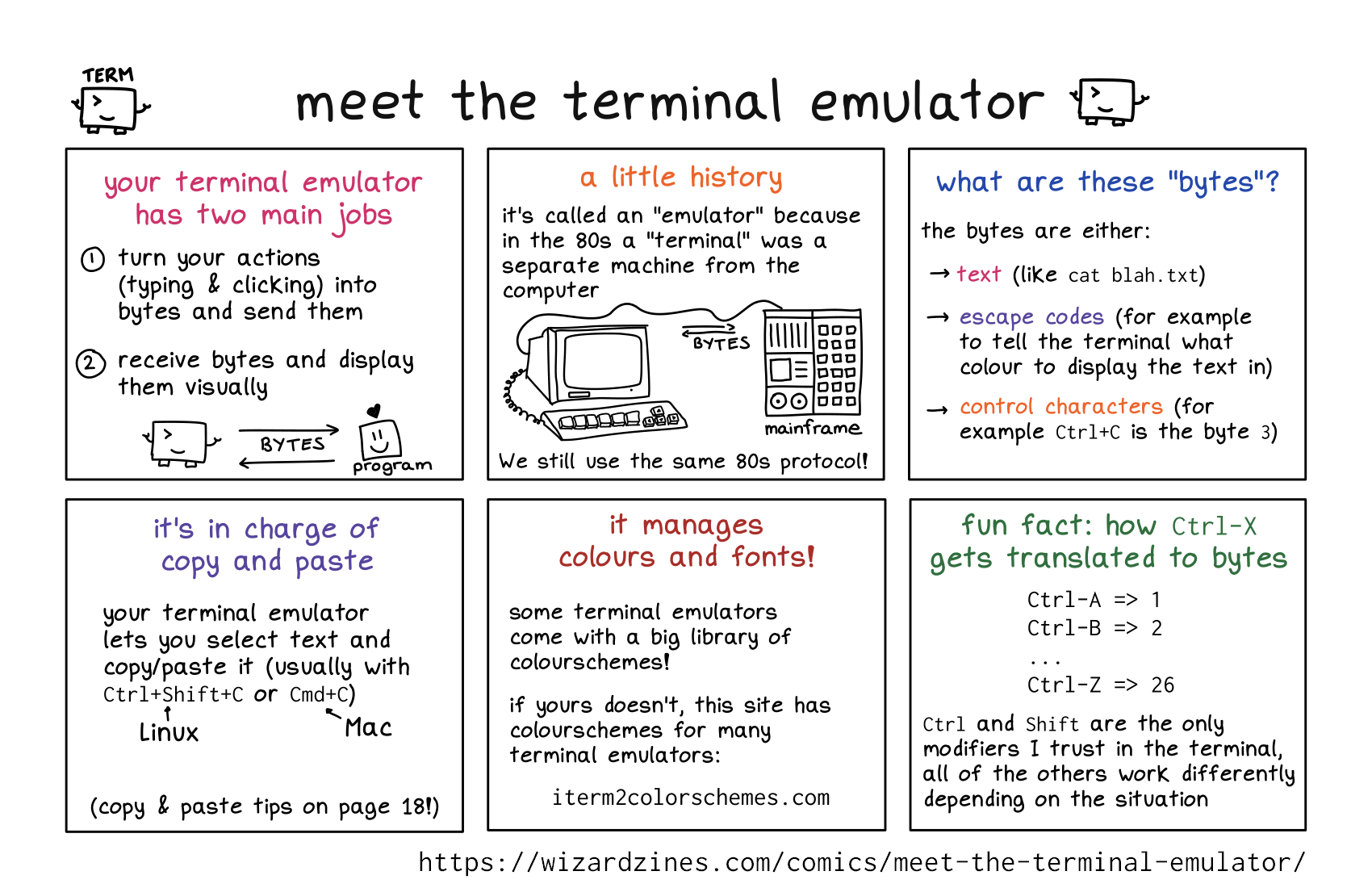
Here's a preview from my zine, The Secret Rules of the Terminal! If you want to see more comics like this, sign up for my saturday comics newsletter or browse more comics!
 get the zine!
get the zine!
read the transcript!
your terminal emulator has two main jobs
- turn your actions (typing & clicking) into bytes and send them
- receive bytes and display them visually
Illustration of a terminal emulator, with a winking cursor face, and a program, represented by a box with a smiley face. The program has a heart above it, and there are arrows going back and forth between them labelled “bytes”
a little bit of history
it’s called an “emulator” because in the 80s a “terminal” was a separate machine from the computer
Illustration of a bulky old monitor, with a keyboard attached with a spiral cord, and a wire running to a panl of buttons and displays, labelld “mainframe”. There are arrows going back and forth between them labelled “bytes”
We still use the same 80s protocol!
what are these “bytes”?
the bytes are either:
- text (like
cat blah.txt) - escape codes (for example to tell the terminal what colour to display the text in)
- control characters example
Ctrl+Cis the byte3)
it’s in charge of copy and paste
your terminal emulator lets you select text and copy/paste it (usually with Ctrl+Shift+C (Linux) or Cmd+C (Mac))
(copy & paste tips on page 18!)
it manages colours and fonts!
some terminal emulators come with a big theme library of different colourschemes!
if yours doesn’t, this site has colourschemes for many terminal emulators:
iterm2colorschemes.com
fun fact: how Ctrl-X gets translated to bytes
Ctrl-A => 1
Ctrl-B => 2
...
Ctrl-Z => 26
Ctrl is the only modifier key I trust in the terminal, all of the others can work differently depending on the situation
Saturday Morning Comics!
Want another comic like this in your email every Saturday? Sign up here!
